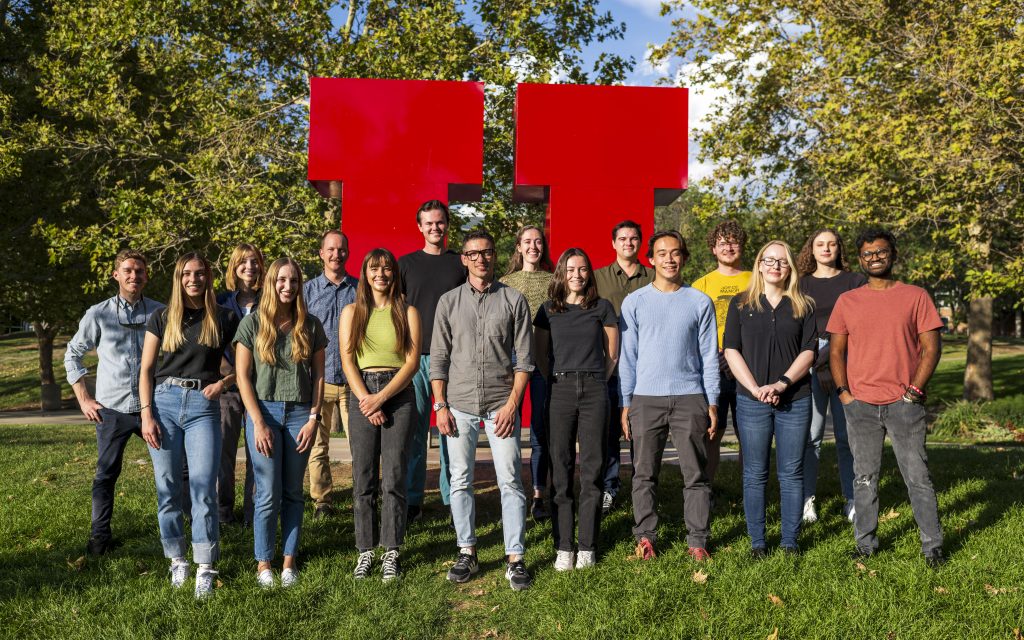
Principal Investigator
Tommaso Lenzi, PhD
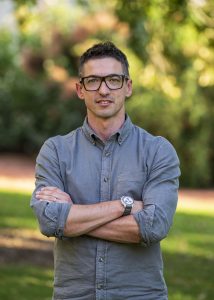 Biography
Biography
Tommaso Lenzi received an MS in Biomedical Engineering from the University of Pisa in 2008, followed by a Ph.D. in Biorobotics from the Sant’Anna School of Advanced Studies in 2013. After completing his postdoctoral training with the Feinberg School of Medicine at Northwestern University (2013-2014), he started his independent career as a Research Scientist at the Rehabilitation Institute of Chicago (2015-2016), now Shirley Ryan AbilityLab.
Since 2017, Dr. Lenzi has been with the University of Utah. Currently, he is an associate professor in the Department of Mechanical Engineering and has a courtesy appointment in Biomedical Engineering. He is also a Core Faculty member of the Utah Robotics Center and the Director of the Ergonomics and Safety Program at the Rocky Mountain Center for Occupational and Environmental Health. Dr. Lenzi leads the HGN Lab for Bionic Engineering, which currently hosts three postdoctoral fellows, 13 graduate students, and several undergraduates. His research is supported by various funding sources, including NIH, NSF, DOD, NIOSH, and the private sector.
Dr. Lenzi’s transdisciplinary research breaks traditional engineering and medical boundaries, aiming to create human-centered technologies and interventions that enable unrestricted movement and independent living for all. His work, which has been recognized with over 80 peer-reviewed scientific publications, including papers in prestigious journals such as Science and Nature and 13 patents and applications, has earned him numerous awards. These include the NSF CAREER Award (2020), the Presidential Scholarship from the University of Utah (2023), and the TIME Magazine’s Best Invention of the Year award (2023).
Research Scientist
Lukas Gabert, Ph.D.
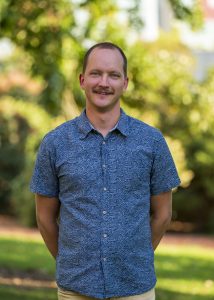 Lukas Gabert received his bachelor’s degree from the New Mexico Institute of Mining and Technology in 2016 and a Ph.D. in Mechanical Engineering from the University of Utah in 2022. Lukas has extensive experience in the design, development, and testing of wearable robots. His passion lies at the intersection of mechanical design, embedded systems, and controls. Outside of academia, he likes to spend time outdoors, travel, and eat tasty food.
Lukas Gabert received his bachelor’s degree from the New Mexico Institute of Mining and Technology in 2016 and a Ph.D. in Mechanical Engineering from the University of Utah in 2022. Lukas has extensive experience in the design, development, and testing of wearable robots. His passion lies at the intersection of mechanical design, embedded systems, and controls. Outside of academia, he likes to spend time outdoors, travel, and eat tasty food.
Postdoctoral Scholars
Rosemarie Murray, Ph.D.
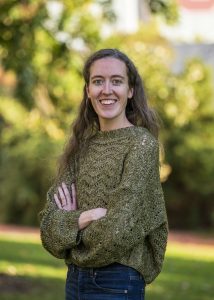
Rosemarie Murray received her Bachelor of Science degree in 2016 and her Ph.D. in Mechanical Engineering in 2022 both from Columbia University, where she developed new designs for powered exoskeletons for postural control. In addition to robotics, she maintains an active interest in dance, martial arts, and somatic movement.
Google ScholarPh.D. Students
Dante Archangeli
Marissa Cowan
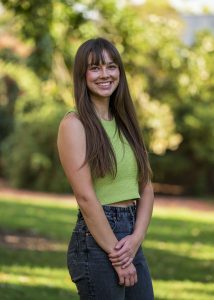
Marissa Cowan is a Mechanical Engineering Ph.D. student in the Bionic Engineering Lab at the University of Utah. She received her B.S. in Bioengineering from the University of Illinois in 2022. During her undergraduate studies, she interned at PSYONIC, a prosthetic company that designs and manufactures upper-limb prosthetics. There, she discovered her passion for helping others through engineering life-changing devices. Outside of the lab, Marissa enjoys climbing, mountain biking, and snowboarding.
LinkedInAndy Gunnell
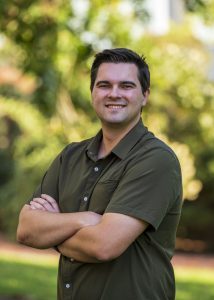
Andy Gunnell is a Ph.D. student in Mechanical Engineering, who joined the Bionic Engineering Lab in 2019 as an undergraduate research student after winning a UROP scholarship and received his B.S. degree from the University of Utah in 2020. Andy’s research focuses on studying wearable robotics and exoskeletons and their biomechanical effects on lower-limb amputees and stroke victims. After completing his Master’s, Andy plans on pursuing a Ph.D. with the lab. Outside of work, Andy enjoys fishing, golfing, watching sports, and playing video games.
Email: Andy(dot)Gunnell(at)utah(dot)edu Google ScholarGrace Hunt

Email: grace(dot)hunt(at)utah(dot)edu
LinkedIn Google ScholarJesse Prime
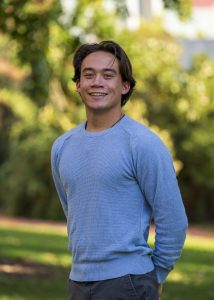
Jesse Prime is a Mechanical Engineering PhD student. He graduated from the University of Utah with an Honors Bachelor of Science in Mechanical Engineering in 2023. During his undergraduate degree, he worked on developing a prototype soft exoskeleton for his honors thesis. After graduating, he joined the HGN Lab for Bionic Engineering to further pursue his education and passion for rehabilitation and robotics. Outside of research, he enjoys skiing, climbing, and spending as much time outdoors as possible.
Email: jesse(dot)b(dot)prime(at)utah(dot)edu LinkedInKai Pruyn

Kai Pruyn is an PhD student studying Mechanical Engineering at the University of Utah. She joined the Bionic Engineering Lab after participating in the ACCESS program for women in STEM. Her interests are in the design and function of prosthetic devices. Kai is originally from Reno, Nevada, and enjoys biking, swimming, and reading when she has free time.
Google ScholarBrendon Ortolano
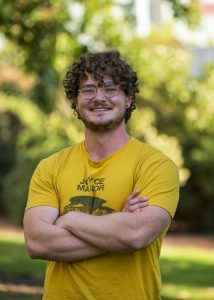
Brendon is a Mechanical Engineering Ph.D. student in the Bionic Engineering Lab. He received a B.S. in Mechanical Engineering from the University of West Florida in 2021. During his undergraduate education, he interned at the Institute for Human and Machine Cognition, where he had the opportunity to develop hardware and software for the Quix exoskeleton and novel perception, mapping, and tracking methods for humanoid robots, rovers, and watercraft. Brendon’s interests include the design, control, and validation of lower-limb powered exoskeletons for disabled populations. Outside of academia, he likes to boulder, hike, and watch movies.
Google ScholarLiam Sullivan
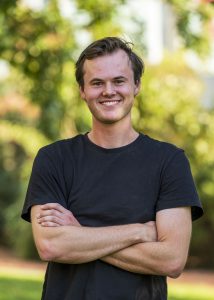
Clare Severe
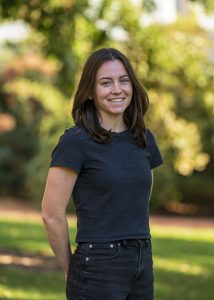
Clare Severe is a Ph.D. student in Biomedical Engineering. She received a B.S. from Lehigh University, then an M.S. from Northwestern University where she began working in the field of prosthetics. Before joining the Bionic Engineering Lab, she worked on biomechanical research studies at Walter Reed National Military Medical Center focused on improving the experience of prosthesis and orthosis users. Her interests include biomechanics, human-device interaction and wearable robotics. Outside of work, she enjoys spending time outside running, skiing and learning new things.
Email: clare(dot)severe(at)utah(dot)eduVishnu Aishwaryan Subra Mani
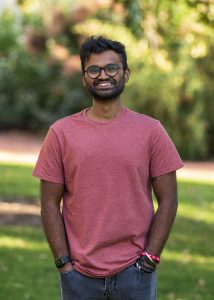 Vishnu is a Ph.D. student in Mechanical Engineering at the University of Utah. He earned his master’s degree in Mechanical Engineering from Worcester Polytechnic Institute in 2020. Before joining UofU he worked as a Research Associate at the Institute for Human and Machine Cognition in Pensacola, FL, where he served as one of the design leads focusing on rehabilitative exoskeleton for people with lower-limb paralysis, assistive exoskeletons for aging population and humanoid robots. Vishnu is interested in developing designs and controls based on biomechanical observations and in doing so he aims to understand the correlation between prosthetic devices, exoskeletons, and walking robots. During his free time, he likes to sketch arts, boulder, and hike.
Vishnu is a Ph.D. student in Mechanical Engineering at the University of Utah. He earned his master’s degree in Mechanical Engineering from Worcester Polytechnic Institute in 2020. Before joining UofU he worked as a Research Associate at the Institute for Human and Machine Cognition in Pensacola, FL, where he served as one of the design leads focusing on rehabilitative exoskeleton for people with lower-limb paralysis, assistive exoskeletons for aging population and humanoid robots. Vishnu is interested in developing designs and controls based on biomechanical observations and in doing so he aims to understand the correlation between prosthetic devices, exoskeletons, and walking robots. During his free time, he likes to sketch arts, boulder, and hike.
Master Students
Margaret Meagher
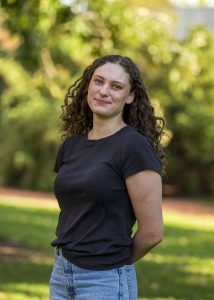 Margaret Meagher is a Masters student in Mechanical Engineering at The University of Utah. She received her B.S. from The University of Tennessee. Following graduation, she worked at Roam Robotics. While at Roam, Margaret worked on exoskeletons designed for various populations and activities, such as exoskeletons to help with knee osteoarthritis, exoskeletons for downhill skiing, and exoskeletons developed for the Department of Defense. Her interests include wearable robotics, human-device interaction, and controls. When not in the lab, Margaret enjoys cooking, hiking, skiing, and live music.
Margaret Meagher is a Masters student in Mechanical Engineering at The University of Utah. She received her B.S. from The University of Tennessee. Following graduation, she worked at Roam Robotics. While at Roam, Margaret worked on exoskeletons designed for various populations and activities, such as exoskeletons to help with knee osteoarthritis, exoskeletons for downhill skiing, and exoskeletons developed for the Department of Defense. Her interests include wearable robotics, human-device interaction, and controls. When not in the lab, Margaret enjoys cooking, hiking, skiing, and live music.
Email: Margaret(dot)Meagher(at)utah(dot)edu
Collaborators
Kenneth Bo Foreman, PT, Ph.D. (Co-Director, Motion Analysis Core, University of Utah)
 Kenneth “Bo” Foreman received his B.S. in Physical Therapy in 1994 and his Ph.D. in Anatomy in 2005 from the University of Utah. As a faculty member in the Department of Physical Therapy, an adjunct faculty member in the Department of Orthopaedics and Mechanical Engineering, and as the Director of the Motion Analysis Core Facility (MoCap), Dr. Foreman has led multiple studies analyzing balance, postural control, and clinical outcome measures as a means of documenting alterations or improvements in movement and function. His background is in biomechanical analyses of movement and a variety of clinical populations prepares me well for this project.
Kenneth “Bo” Foreman received his B.S. in Physical Therapy in 1994 and his Ph.D. in Anatomy in 2005 from the University of Utah. As a faculty member in the Department of Physical Therapy, an adjunct faculty member in the Department of Orthopaedics and Mechanical Engineering, and as the Director of the Motion Analysis Core Facility (MoCap), Dr. Foreman has led multiple studies analyzing balance, postural control, and clinical outcome measures as a means of documenting alterations or improvements in movement and function. His background is in biomechanical analyses of movement and a variety of clinical populations prepares me well for this project.
K. Bo FOREMAN, PhD, PT – Research – Faculty Profile – The University of Utah
Jake George, Ph.D. (Director, NeuroRobotics Lab, University of Utah)
Jacob A. George received his B.S. in Biomedical Engineering and a Certificate in Computational Science and Engineering from The University of Texas at Austin in 2016. George graduated with Highest Honors and was the sole recipient of the Biomedical Engineering Student Leadership Award for his contributions to his department as President of the Biomedical Engineering Honor Society. He then received his M.S. and Ph.D. in Biomedical Engineering from the University of Utah in 2018 and 2020, respectively. At Utah, George served as the Co-President of the Graduate Student Advisory Committee and Inaugural President of the IEEE Engineering Medicine and Biology Student Chapter.


